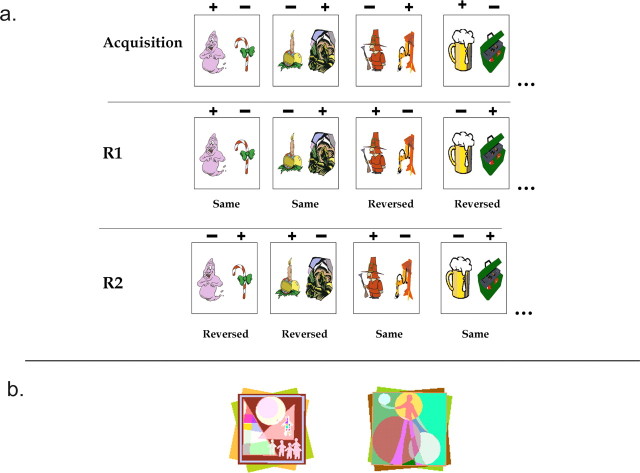Figure 2.
Stimuli from the two experiments. a, Examples of stimuli and their changing reward contingencies in experiment 1. For additional detail, see Materials and Methods, Task Procedure, Experiment 1. Each box represents two stimuli comprising a trial, presented together on the screen. There were 10 such problems in the experiment, of which four examples are shown here. Above the stimuli, a + symbol refers to the stimulus that was rewarded in that trial, and a − symbol refers to stimulus that was not rewarded on that trial. The top line refers to the initial acquisition stage, whereas subsequent lines refer to stages R1 and R2. In each case, monkeys learned a stage to a criterion of 90% within a session before moving on to the next stage. b, Stimuli used in experiment 2. For details, see Materials and Methods, Task Procedures, Experiment 2. The two stimuli were the only stimuli used throughout the experiment. In any given session, one was rewarded and one was not. These contingencies reversed every time the monkey reached criterion on a session.

